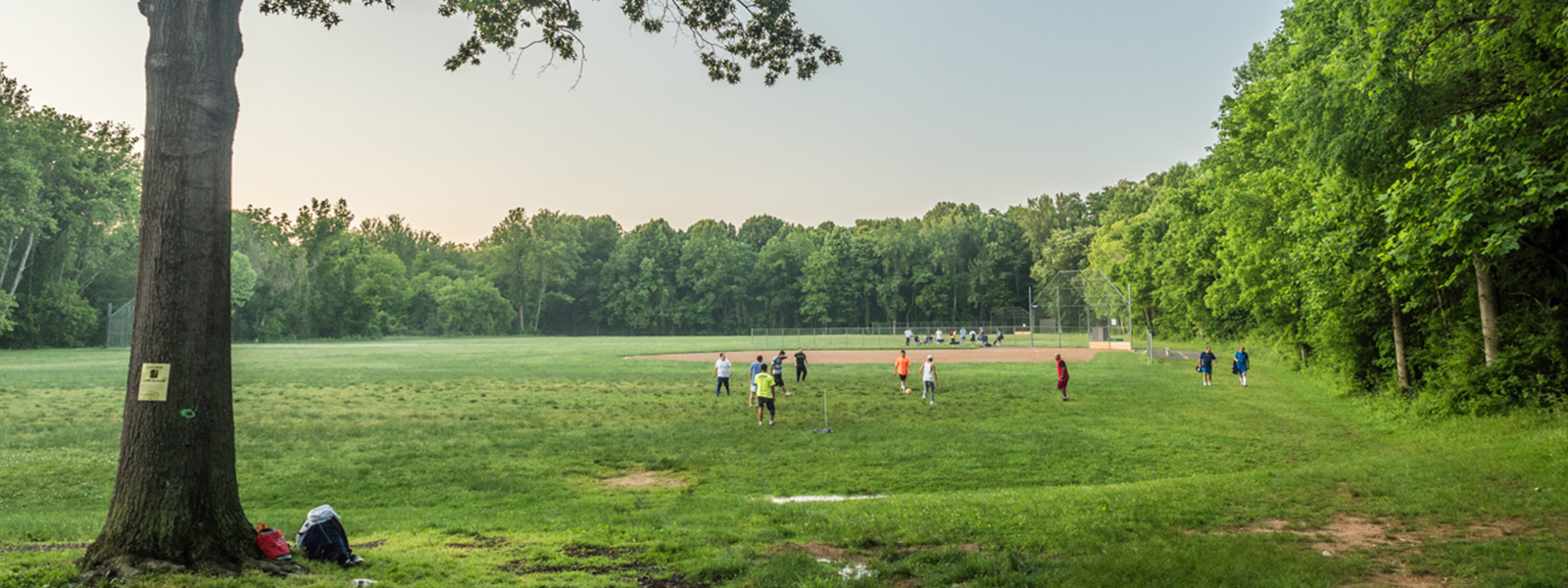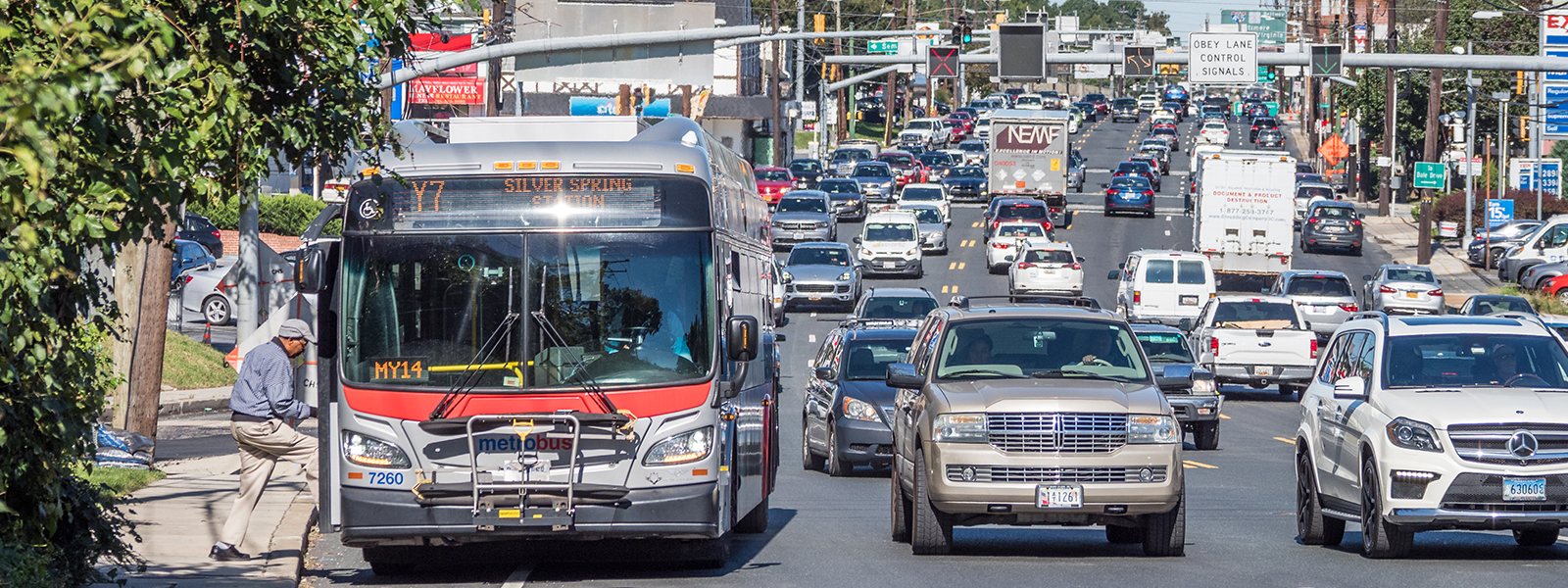History
When the 1964 Wedges and Corridors Plan was adopted, much of Montgomery County was undeveloped. The plan recognized, however, that what seemed to be abundantly available land must be used wisely and issues of sprawl and preservation had to be addressed head-on. Though that approach was visionary, its implementation had some unintended consequences, such as inequitable investment between the eastern and western parts of the county, excessive reliance on automobiles, and zoning of more than one-third of the county exclusively for single family homes. The plan’s desired urban form also went unrealized in many areas, and meanwhile the absence of tighter limits allowed development to disperse, consuming large amounts of land and increasing the cost of roads, water, sewer, and other public infrastructure by limiting economies of scale. This pattern of development also limited opportunities to offer cost-effective transit service.
In addition, discriminatory land use and planning-related practices, including the legacy of redlining and racial covenants combined with exclusionary zoning, produced inequitable patterns of development. While the end of de jure racial discrimination eliminated many legal barriers to equity, social and economic obstacles remain today.
Much more has changed in the sixty years since this last update to Montgomery County’s general plan, necessitating this long-overdue process. For Montgomery County to continue to thrive, we must be prepared to take bold steps to prepare for the future. Thrive Montgomery 2050 is the vehicle for assessing these shifts and adapting our approach to planning for the next 30 years.
Thriving Equitably
Advancing racial equity through just planning policies and public investments in underserved communities, promoting the racial and economic integration of neighborhoods, and focusing on the potential for the design of communities to help build social trust and inclusion while encouraging civic participation are among the most significant elements of Thrive Montgomery 2050. Thrive Montgomery 2050 strives to create racially integrated and just communities.
Thrive Montgomery 2050 emphasizes that equity, diversity, and inclusion are essential to the county’s economic success as well as to our ability to produce more equitable outcomes for all the county’s residents, who deserve high-quality housing, education, jobs, transportation, and recreational opportunities. As we seek a more equitable and inclusive future, improved access to infrastructure and amenities in racially, socially, and economically isolated areas will not be enough. Montgomery County also must facilitate the integration of neighborhoods by race and income, across all ages.
That vision lies at the heart of not only Thrive Montgomery 2050 but also our Equity Agenda for Planning, which is Montgomery Planning’s an ongoing commitment to systemically dismantle the institutional and structural racism that exists in and has long influenced planning and zoning processes and to prevent that influence in the future.
In this and in all our work, we are committed to confronting the legacy of racism and its ongoing effects and to using this equity lens in all our plans, policies, practices, and other work—including to ensure that staff understand and practice social justice in their hiring practices and work to dismantle their own internalized biases.
Planning for a diverse county
Diversity and inclusion are essential to our economic success as well as to our ability to produce more equitable outcomes for all our residents, who deserve high-quality housing, education, jobs, transportation, and recreational opportunities. The county’s population has grown more diverse because of a steady influx of foreign-born immigrants, and today Montgomery County is home to some of the most culturally diverse places in the United States, including Silver Spring, Rockville, Gaithersburg, and Germantown.
But past patterns of discrimination—some intentional, some unintentional—have left many communities geographically, economically, and socially isolated. Even as the county becomes more racially and ethnically diverse, our neighborhoods are still largely separated along income and racial lines. This geographic separation has important consequences for access to educational opportunities and the life prospects of our county’s children.
Learn more about that history in the Equity Agenda section.
Decisions about land use, transportation, and public infrastructure thus play an important role in building a sense of community. Different measures of social capital, including trust in public and private institutions, the planning process, political participation, whether neighbors know each other, and other indicia of connection and cohesion are influenced by qualities of the built environment.
The design of our communities can greatly influence levels of community cohesion and social interaction. Creating social capital requires the built environment to encourage and make it easier for people to meet others and engage in activities. For this reason, Thrive Montgomery 2050 emphasizes the roles streets, parks, and public spaces play in creating a physical environment where a sense of community can flourish.
Advancing racial equity through just planning policies and public investments in underserved communities, promoting the racial and economic integration of neighborhoods, and focusing on the potential for the design of communities to help build social trust and inclusion while encouraging civic participation and participation in the planning process are among the most significant elements of Thrive Montgomery 2050.
Racial equity work seeks to heal; implementation of its ideals requires an honest and careful examination of history to inform deliberate actions aimed at repairing past injustices which have disproportionately impacted Black and Indigenous communities in America. The legacy of racist policies, and the land uses they influenced, reverberates throughout the entire spectrum of communities of color, with Latinx, Asian, and other BIPOC communities experiencing different, but familiar challenges. Addressing racial equity requires an honest look at root causes of social problems and recognizing that some form of restitution is required to fix them.
To make planning more equitable we must acknowledge the systems of racial discrimination and privilege which reinforce disparate outcomes for Montgomery County households. Planning alone cannot end racism and segregation or prevent the erosion of cultural communities that wish to remain intact; it can however be an important tool to begin the work of dismantling long-established systems of privilege.
Ultimately, Thrive Montgomery 2050 strives to create racially integrated and just communities. Like economic competitiveness and environmental sustainability, policies designed to advance racial and social equity are integrated into every part of Thrive Montgomery 2050.


